
The United States Capitol, often called the Capitol or the Capitol Building, is the seat of the United States Congress, the legislative branch of the federal government. It is located on Capitol Hill at the eastern end of the National Mall in Washington, D.C. Although no longer at the geographic center of the national capital, the U.S. Capitol forms the origin point for the street-numbering system of the district as well as its four quadrants. Like the principal buildings of the executive and judicial branches, the Capitol is built in a neoclassical style and has a white exterior.
Edward, Ed, or Eddie White may refer to:

The National Statuary Hall is a chamber in the United States Capitol devoted to sculptures of prominent Americans. The hall, also known as the Old Hall of the House, is a large, two-story, semicircular room with a second story gallery along the curved perimeter. It is located immediately south of the Rotunda. The meeting place of the U.S. House of Representatives for nearly 50 years (1807–1857), after a few years of disuse it was repurposed as a statuary hall in 1864; this is when the National Statuary Hall Collection was established. By 1933, the collection had outgrown this single room, and a number of statues are placed elsewhere within the Capitol.
The year 1878 in architecture involved some significant events.

Edward Douglass White Jr. was an American politician and jurist. A native of Louisiana, White was a U.S. Supreme Court justice for 27 years, first as an associate justice from 1894 to 1910, then as the ninth chief justice from 1910 until his death in 1921.
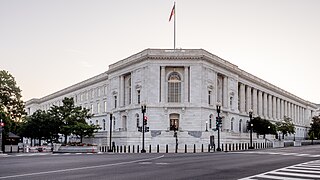
The Russell Senate Office Building is the oldest of the United States Senate office buildings. Designed in the Beaux-Arts architectural style, it was built from 1903 to 1908 and opened in 1909. It was named for former Senator Richard Russell Jr. from Georgia in 1972. It occupies a site north of the Capitol bounded by Constitution Avenue, First Street, Delaware Avenue, and C Street N.E.
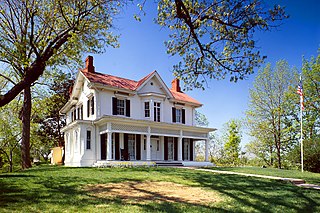
The Frederick Douglass National Historic Site, administered by the National Park Service, is located at 1411 W Street, SE, in Anacostia, a neighborhood east of the Anacostia River in Southeast Washington, D.C. United States. Established in 1988 as a National Historic Site, the site preserves the home and estate of Frederick Douglass, one of the most prominent African Americans of the 19th century. Douglass lived in this house, which he named Cedar Hill, from 1877–1878 until his death in 1895. Perched on a hilltop, the site offers a sweeping view of the U.S. Capitol and the Washington, D.C., skyline.

The Delaware Legislative Hall is the state capitol building of Delaware. Located in the state capital city of Dover on Legislative Avenue, it houses the chambers and offices of the Delaware General Assembly. It was designed in the Colonial Revival architecture style by E. William Martin and Norman M. Isham, and built 1931–1933, with wings added in 1965–1970 and 1994.

The Thurgood Marshall Federal Judiciary Building (TMFJB) at the crossroads of the Capitol Hill and NoMA neighborhoods in Washington, D.C., houses offices that support the work of the United States Courts, including the Administrative Office of the United States Courts, the Federal Judicial Center, the United States Sentencing Commission, and the Office of the Clerk of the Judicial Panel on Multidistrict Litigation.

Newton Crain Blanchard was a United States representative, U.S. senator, and the 33rd governor of Louisiana.
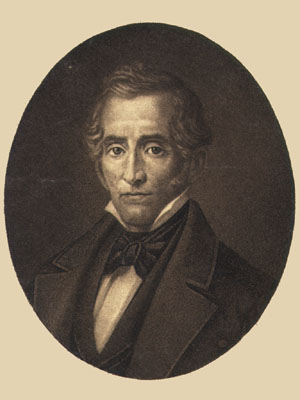
Edward Douglass White was a 19th century American lawyer and politician who served as the tenth Governor of Louisiana and a member of the United States House of Representatives. He served five terms in Congress between 1829 and 1843 as an adherent of Henry Clay of Kentucky and the Whig Party.

The 1894–95 United States Senate elections were held on various dates in various states. As these U.S. Senate elections were prior to the ratification of the Seventeenth Amendment in 1913, senators were chosen by state legislatures. Senators were elected over a wide range of time throughout 1894 and 1895, and a seat may have been filled months late or remained vacant due to legislative deadlock. In these elections, terms were up for the senators in Class 2.
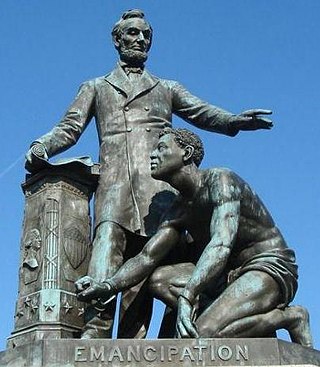
The Emancipation Memorial, also known as the Freedman's Memorial or the Emancipation Group is a monument in Lincoln Park in the Capitol Hill neighborhood of Washington, D.C. It was sometimes referred to as the "Lincoln Memorial" before the more prominent national memorial was dedicated in 1922.
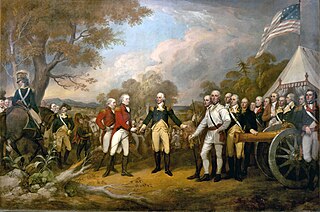
The Surrender of General Burgoyne is an oil painting by the American artist John Trumbull. The painting was completed in 1821 and hangs in the United States Capitol rotunda in Washington, D.C.
Arthur Carmine Morgan was an American sculptor, mostly of Louisiana political and business figures. Morgan's work can be seen across his home state of Louisiana and in the Capitol Visitor Center, Washington, DC. He and his wife Gladys B. Morgan ran an art school, the Southwestern Institute of Arts, in their Shreveport home for over forty years.
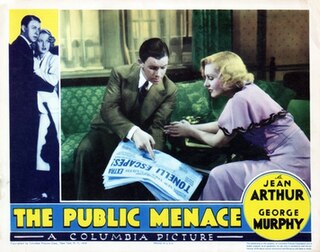
The Public Menace is a 1935 American black-and-white romantic drama film starring Jean Arthur, George Murphy and Douglass Dumbrille. A newspaper reporter keeps losing and regaining his job due to a manicurist he is persuaded to marry.
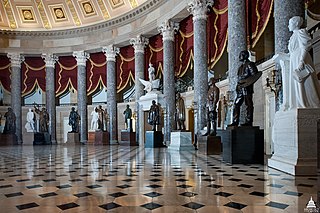
The National Statuary Hall Collection holds statues donated by each of the United States, portraying notable persons in the histories of the respective states. Displayed in the National Statuary Hall and other parts of the United States Capitol in Washington, D.C., the collection includes two statues from each state, except for Virginia which currently has one, making a total of 99.
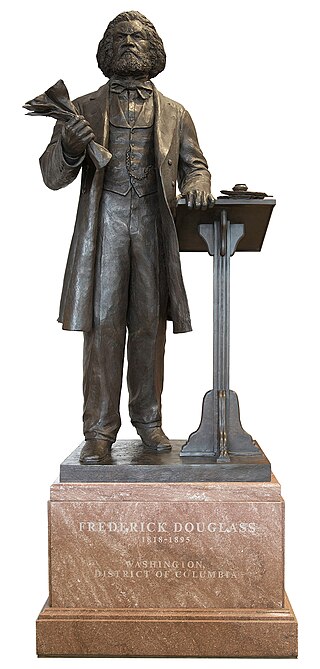
Frederick Douglass is a 2013 bronze sculpture depicting the American abolitionist and politician of the same name by Steven Weitzman, installed in the United States Capitol Visitor Center's Emancipation Hall, in Washington, D.C.

The United States Capitol displays public artworks by a variety of artists, including the National Statuary Hall Collection and United States Senate Vice Presidential Bust Collection.















